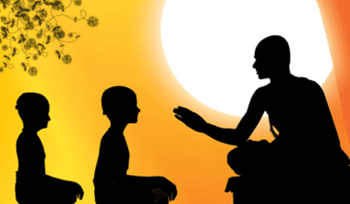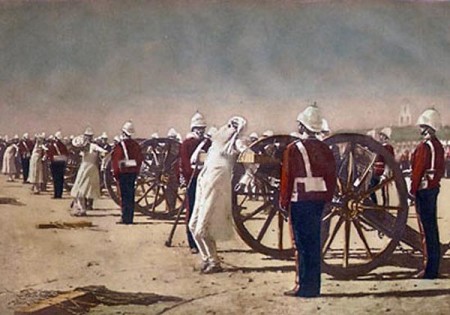The word Ayur-Veda specifically means the “Science or Knowledge of Life or Longevity”.
In other words, it means ‘how we are to live and manage our life’. An appropriate term to describe Ayur-Veda is ‘The Yoga of Life’.
It is a system that – when correctly understood, applied and practiced – leads one to Yoga, our ultimate goal or Dharma. It is a wholly Spiritual system and discipline.

As Kara-Leah wrote recently when sharing her experience of meeting us in the article What is an Ayurvedic Consultation and Treatment Plan?, Vaidyar Mani was at pains to point out that our focus is traditional and that this is different to the modern approach of Ayurveda.
This article is to expand and explain how and why things have changed today and what the meaning of ‘Traditional’ really is.
This is very important as the word ‘Traditional’ is very commonly and incorrectly used thus confusing many people not the least Ayurvedic Practitioners!
Modern Ayurveda is allopathic in its approach and is secular rather than religious or spiritual.
The role of Ayurveda here is seen as a system of medicine that treats diseases and the symptoms of diseases. The only real difference to modern medicine is that traditional and natural approaches such as herbs and massage are used rather than chemical drugs. But the focus is still on treating the disease. The principles and philosophy of Ayurveda are not the key or essence in this modern system, but rather a topic to be studied in a theoretical sense.
Modern Ayurvedic Doctors address and see themselves as Doctors and go through a five year (or longer) disciplinary program at University and study most of what a Modern-day Doctor has to study, in addition to some aspects of Ayurvedic Philosophy and principles.

Classically, Ayurveda also looked at the management of disease and symptoms but this was only an aspect or more secondary approach to working with an individual. It was never the primary focus. Today modern Ayurveda focuses almost completely on this aspect, with the spiritual focus greatly or completely diminished.
To most, the two approaches, traditional and modern, are thought to be the same, even to those who are practicing this Science of Life!
Many of these Doctors may indeed have ancestors that followed the traditions closely. In fact when people in India talk about tradition (Sampradya in Sanskrit and Paramparai in Tamil), it could mean they have a lineage of forefathers who have followed a particular and Ancient discipline or practice of Yoga, Ayurveda or Tantric rituals.
The student could claim to be Traditional if he or she has undertaken to practice the similar science as handed down to him or her by his or her forefathers. But how can one claim a particular tradition if one has chosen to study Ayurveda in a University and become an Ayurvedic Doctor rather than follow the path of his or her elders?
Another factor that confuses is that some treatment centres in India have been around for many years and they may even be quite strict in terms of their use of food, herbs, exercise etc. They use the terms Authentic and Traditional but the difference again is the approach being one of disease treatment rather than total treatment. Modern Ayurveda is still symptomatic in its focus.
Classical or Traditional Ayurveda is not well understood today. This is not just in the West but especially so in India.
Classical Ayurveda focuses on the subtle or underlying disturbances in an individual rather than the symptoms or characteristics they are exhibiting. These are the root causes of any problems manifest now or still on the way.
Identifying the root cause cannot be achieved by modern diagnostic approaches ,and in fact the mind or intellect must be suspended by one well versed in spiritual practice and who can be free of Ego, conditioned thoughts, and preconceived ideas.
These qualities cannot and are not taught in modern day colleges of higher learning and take a different level of discipline and practice to master.
Another problem in modern times relates to using characterisation to determine subtle disturbance (termed ‘Dosha’) from personality or physical characteristics.
This has led to many cases of misdiagnosis (both by students and practitioners) and therefore incorrect and inappropriate treatment. A lot of this harks back to misinterpretation and incorrect translation of Indian texts which are symbolic and subtle in their meaning rather than literal. These mistakes in interpretation have become ‘facts’ as they are constantly repeated and printed in numerous books and websites.
Of course it is a lot easier to identify and work on symptoms than to work traditionally!
Firstly, symptoms are already apparent and can be seen and accepted. The subtle is much more difficult to appreciate or sense and the problem may still be ‘on the way’ rather than manifest so far less urgent to the minds of many patients and therapists. They may even doubt any such disturbance exists as they can’t ‘see it’.
Secondly, any symptomatic treatment is likely to give some immediate relief and this is welcomed and gives comfort to the one suffering. It may appear the problem has gone, at least temporarily, and it is no longer disturbing our life in the same way. We don’t need to think about it until such time we get sick again.
Thirdly most symptomatic treatments don’t require major changes in lifestyle, thinking, or habits, all of which take discipline, responsibility, effort and time.
This is not just true for the student/patient but especially so for the practitioner who must guide, confront, direct, and continually educate and challenge the patient/student they are working with.
This takes an enormous amount of time and energy as we aren’t just trying to overcome the disturbances themselves, but more importantly, trying to adjust routines and attitudes that may be stubbornly and deeply entrenched. And the mind is ever ready to resist change, to doubt, and to sabotage all efforts.
Traditional Ayurveda is at the end of the day, a battle with Ego, and it takes an evolved student to realise this and have the patience to persevere, to grow, and to have faith in the practitioner, in themselves, and ultimately in the Self that is all.
The traditional and spiritual path appears a much harder road to travel and yet it is the road we are all on whether we realise it or not. Ignorance of this is why we suffer in the first place and this is the real tragedy and sickness of our modern world.
So where has this shift in approach and thinking occurred and why? First it is important to understand the Indian or Hindu mind and secondly how modern history has affected the culture and thinking of this nation.
There is no difference in the Hindu/Buddhist mind between religion and spirituality. They are the same but it is understood there are different levels of understanding, growth and evolution.
Hinduism allows worship from the lowest to highest forms. Traditionally Ayurveda is nothing but reflections of various concepts from the Hindu / Buddhist religion. As we have already seen modern Ayurveda is secular and it sees Ayurveda as a system of medicine.
Ayurveda, though introduced and codified in India, has spread its roots worldwide. Greek traders took the concept to Greece and developed Unani, a system of medicine based on Ayurvedic principles. Buddhist monks introduced Ayurveda and martial arts to Tibet and South East Asia and China. From here evolved the Thai version of ‘Ayurved’ or Thai Traditional Herbal Medicine and Thai Traditional Massage, and in China Traditional Chinese Medicine (TCM) and widely known arts such as Kung-Fu. Acupuncture was part of traditional Ayurveda also, known as ‘suchi veda’, the science of piercing or spearing, but is no longer practiced in Ayurveda.
Over the years, from the principles of Ayurveda, there arose in these other parts of the world very distinct and unique local systems of healing. Today many have forgotten their timeless and ancient roots. This is for many reasons but primarily those of politics, commercial gain, racial pride or ignorance. Ironically, in the West systems such as TCM are more widely recognised than Ayurveda, the mother or root from where such systems originated.
Ayurveda in India lost the patronage it enjoyed under Hindu/Buddhist rule due to the occupation of the Muslims and the British over a 600 year period. Some parts of the tradition were no longer accepted under the new rulers so the continuity of the system was virtually destroyed.

When India regained its independence the Indian government made all efforts to reintroduce all things ‘Indian’ and Ayurveda was one of them.
Sadly however, the original concept of Ayurveda as a system of Yoga was unable to be reintroduced in its original form.
This is because traditionally, the system was based on the Gurukulam or Hermitage where young students lived and studied with the teacher and family as a student and child of that family.
The fundamental practice and line of study was spirituality based on Sanatana Dharma (eternal truth or Hinduism). A similar practice existed with Indian Buddhist students in later times.
However, modern independent India as a secular state did not sponsor the traditional system due to politics.
Indian Christians and Muslims could not fit into this traditional Yogic system due to their views on religion and life. Because of this a system similar to allopathy was introduced using certain aspects of Ayurvedic treatment but missing out on the core of Ayurveda, that is first concerned with the individual as a whole and not just the disease.
This explains why Ayurveda is practised so differently today.
So the India of classical or traditional Ayurveda and the India of today can be seen to be very different. India is not the land many people of the western world think it to be.
It was a land of the wise and of the learned and of the realized but maybe a thousand years ago!
Having almost lost its character and culture, the bulk of the people today no longer see themselves as spiritual beings first and body and mind second. For the past 600 years they have been ruled by foreigners who have introduced much of their values and ideas and mostly forcefully.
Long before that, they have already become weak and splintered into hundreds of minor states. Much of their own traditions and culture and arts were denied them.
Today the the majority of the Indians no longer understand nor appreciate many things Indian, especially those of the esoteric and of the spiritual. Many are stuck with the crudest form of worship, bordering on idolatry.
They do not know anything about the true meaning of Yoga nor of subtle sciences such as Ayurveda. All of such, if practiced is in its basic form or a part only. But yet when approached, they talk as though they are the wisest of the wise. Because they are aware of their ancient roots, they feel that they qualify automatically or by default!
Focusing only on symptoms and the treatment of disease is something many people are becoming increasingly wary of today.
This has been the approach of Modern Conventional medicine or Allopathy and now those in India seem to have taken up what the Western culture has already wearied of!
This is indeed an irony as it is the Indians who first introduced that concept of total well-being and the principles of Holistic and total living. Living as a Whole in total harmony with nature is what Holistic Living is about and this eventually will lead to deeper spiritual realization.
So how do the Traditional and Modern approaches to Ayurveda relate to Yoga?
Again a clear understanding of Yoga is needed here. Yoga is the Whole, where All is One and One is All. Remembering the Wave (the body and mind) is never separate from the Ocean (Truth or Yoga).
This is the goal and purpose of Traditional Ayurveda as with all Yogic systems or paths.

(This article was written by Ancient’s Best and published on the Yoga Lunchbox website)
